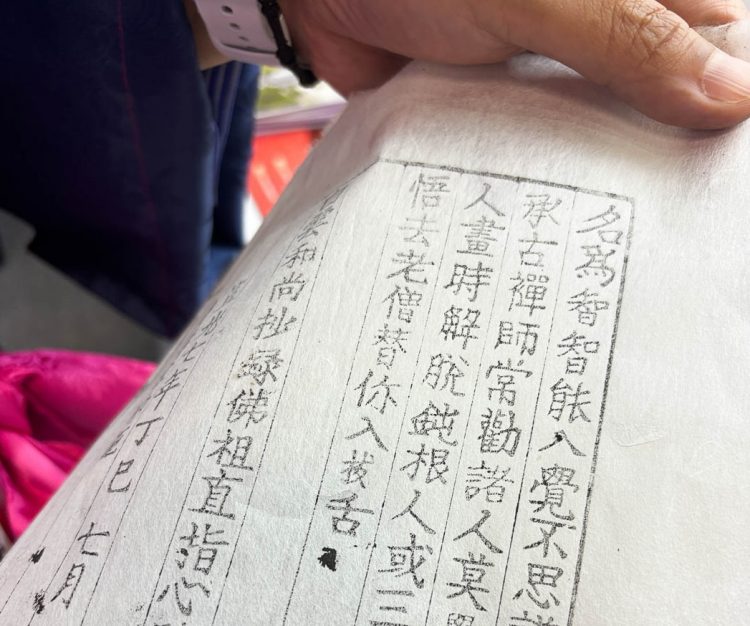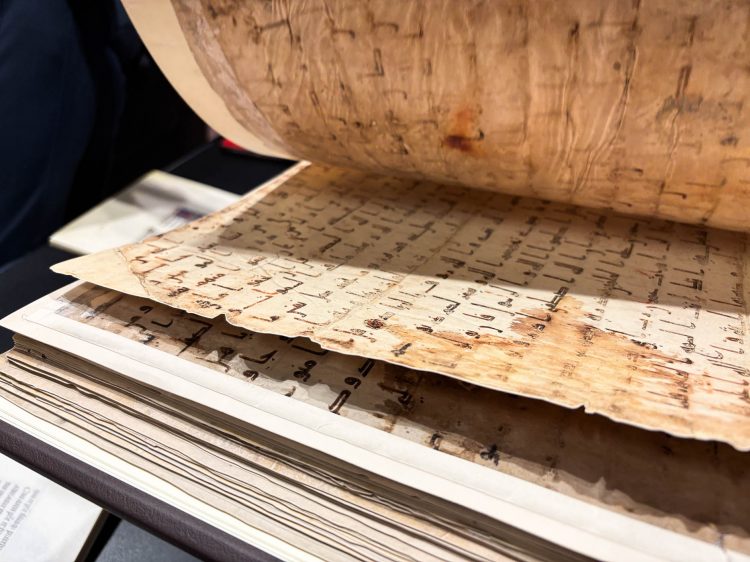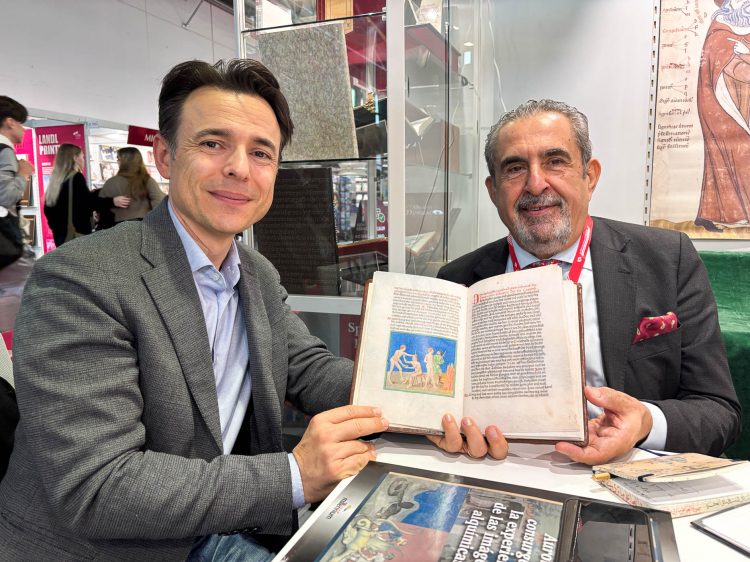At the Frankfurt Book Fair 2025, I explored new facsimile projects celebrating both Western and non-Western manuscripts. From groundbreaking editions to inspiring encounters with global publishers, it was a powerful reminder of how diverse traditions continue to shape the art of the book.
By the time the first rays of dawn reached the horizon, we were already on our way—first to Bologna airport, then to the Fair itself—fueled by salmon bagels, American coffee, and the reassuring efficiency of German public transport.
Arriving just as the doors opened, we joined the first wave of visitors stepping into halls that, within hours, would be buzzing with conversation, paper samples, and the distinct energy that only the publishing world can produce.


Early Hours, Fresh Encounters
As the pavilions filled, the atmosphere grew both vibrant and focused. German and international publishers alike brought a remarkable dynamism to the halls, reminding us that the art of the book, especially the fine art book, is very much alive.

We wandered from stand to stand, reconnecting with old friends, meeting new ones, and, of course, delighting in that irresistible ritual of touching new papers, bindings, and book materials.
This year’s fair brought encouraging news: several new facsimile editions are on the horizon. Not all of them will focus exclusively on Western manuscripts—an exciting sign of broader cultural perspectives entering the field.
Facsimile Finder will proudly participate in some of these projects, working to make rare, scholarly accurate, and affordable editions available to university libraries worldwide.

Several new facsimile editions are on the horizon—not all of them will focus exclusively on Western manuscripts.
Highlights from the Fair

Our first stop was at the Universal Art Group stand, where we were warmly welcomed by Charlotte Kramer, Dieter Röschl, and Alexander Wilhelm. Among the highlights of our conversation was the exceptional new edition of Leonardo’s Sketchbooks (Institut de France), a project that continues to set new standards in facsimile production.
Even more astonishing is the forthcoming facsimile of the Très Riches Heures of the Duke of Berry—a breathtaking achievement in both craftsmanship and innovation. The reproduction of gold and fine details reached such fidelity that even the printing process itself became an act of technological experimentation.
As you may know, I am part of the production team for this edition of the Très Riches Heures. At the Frankfurt Book Fair, I had the opportunity to present a selection of sheets from the facsimile to Charlotte Kramer, who was extremely pleased with them.



Future Projects and Familiar Faces

At Belser Verlag, we caught up with Bernhard Kolb and his team, who are developing several new editions currently in the conceptual stage. These upcoming projects promise to be remarkable, and we will make sure to share updates as soon as they are ready.
Reconnecting with Alberto Sánchez Nieto of Millennium Liber was another highlight. Together we leafed through the Aurora Consurgens and the intriguing document collection “1494” — the first facsimile edition of little-known sheets rediscovered in 2018.
Gunter Tampe of Quaternio Verlag surprised us with a treasure in his backpack: the very first finished copy of the Rothschild Canticles—a long-awaited facsimile many of you have pre-ordered—along with sample leaves from what can only be described as a pinnacle among Flemish manuscripts.
Coffee with Adisa Raljevic from CM Editores provided another inspiring moment. The Spanish publisher has several new titles in the works, including one that might just complete the triad of Normandy’s fourteenth-century Apocalypses. Time will tell—but the anticipation is real.


Italian Creativity and Global Trends
On the Italian front, Imago continues to impress with its prolific output and diverse subjects. Their forthcoming projects—varied in theme, origin, and format—are sure to resonate with collectors and institutions alike.
A recurring theme among many publishers this year was a renewed focus on the great artists—from Michelangelo to Gaudí to Picasso—who will soon be celebrated in large-format art albums. For art history lovers, the future looks as bright as ever.

The art of the book, especially the fine art book, is very much alive.
Printing, Innovation, and Inspiration

One of the most unexpected and delightful moments came from the Korean Printing Museum stand, where visitors could try their hand at printing with metallic movable type. The demonstration featured a faithful reproduction of a document printed seventy years before Gutenberg—a reminder that innovation in printing has many origins.
Between unprinted sheets, richly illustrated codices, exquisite bindings, and conversations both planned and spontaneous, the Frankfurt Book Fair once again proved itself as a meeting ground for creativity and collaboration—and a powerful spark for the imagination.
Until next time, Frankfurt. See you in 2026.



